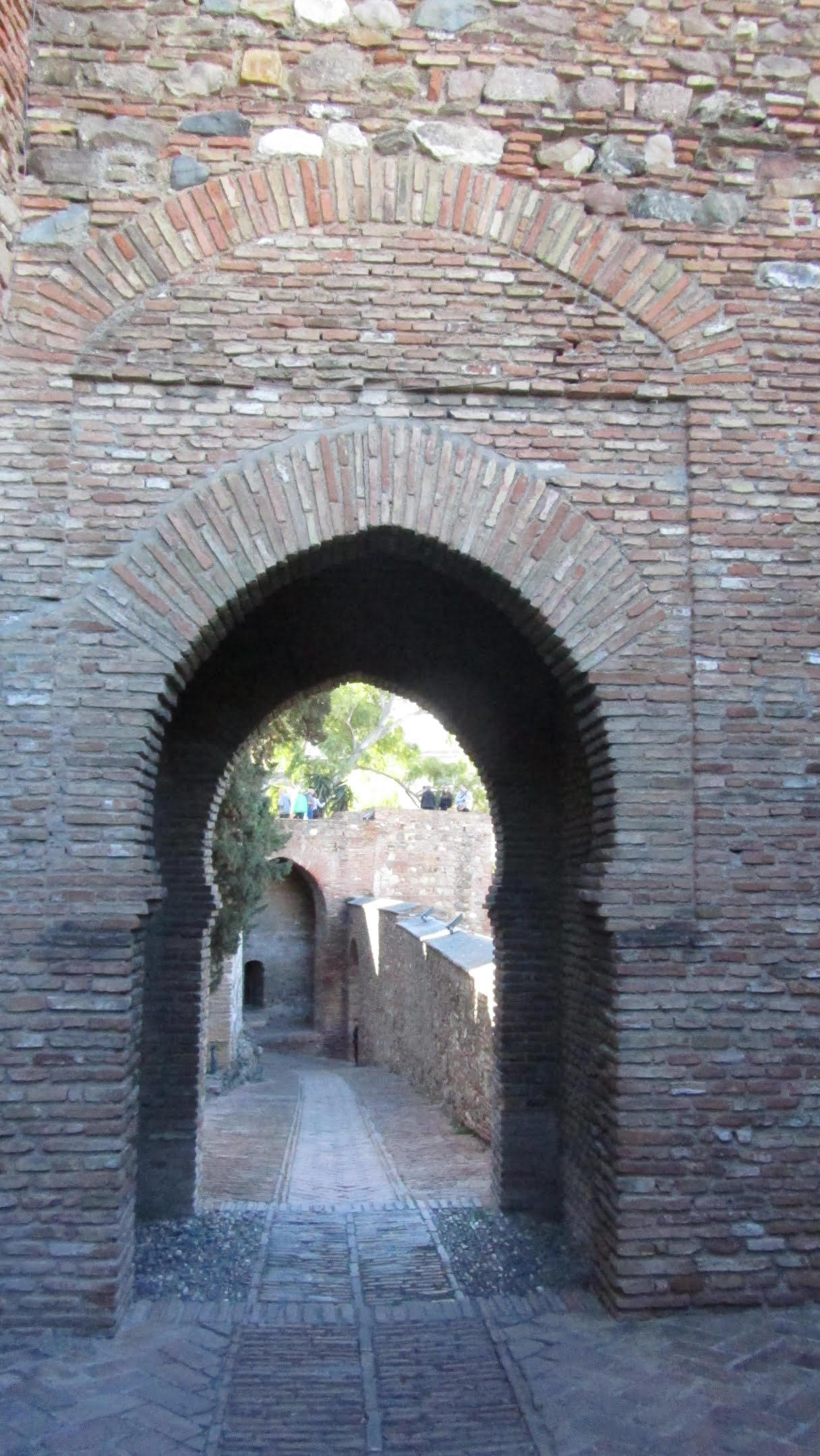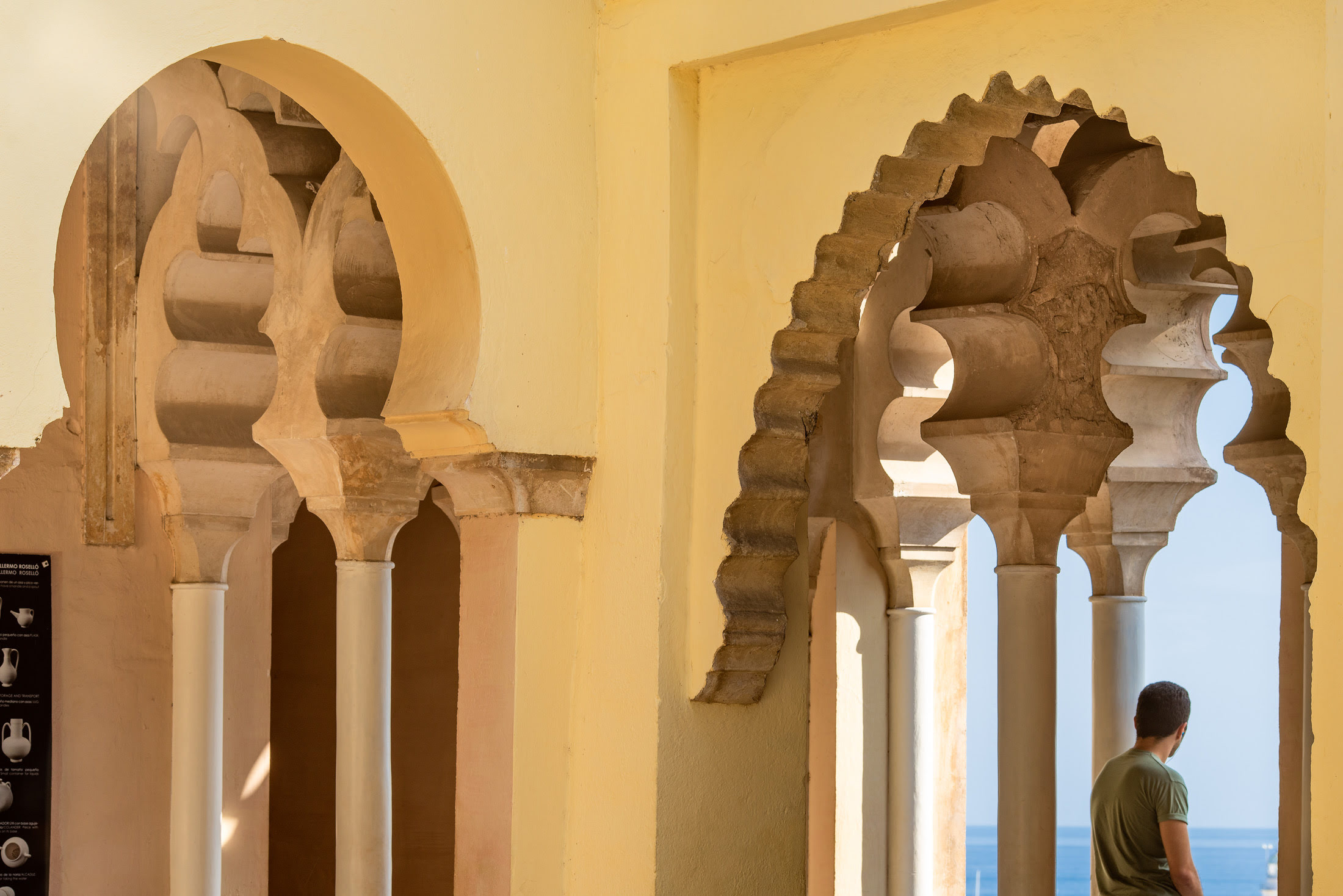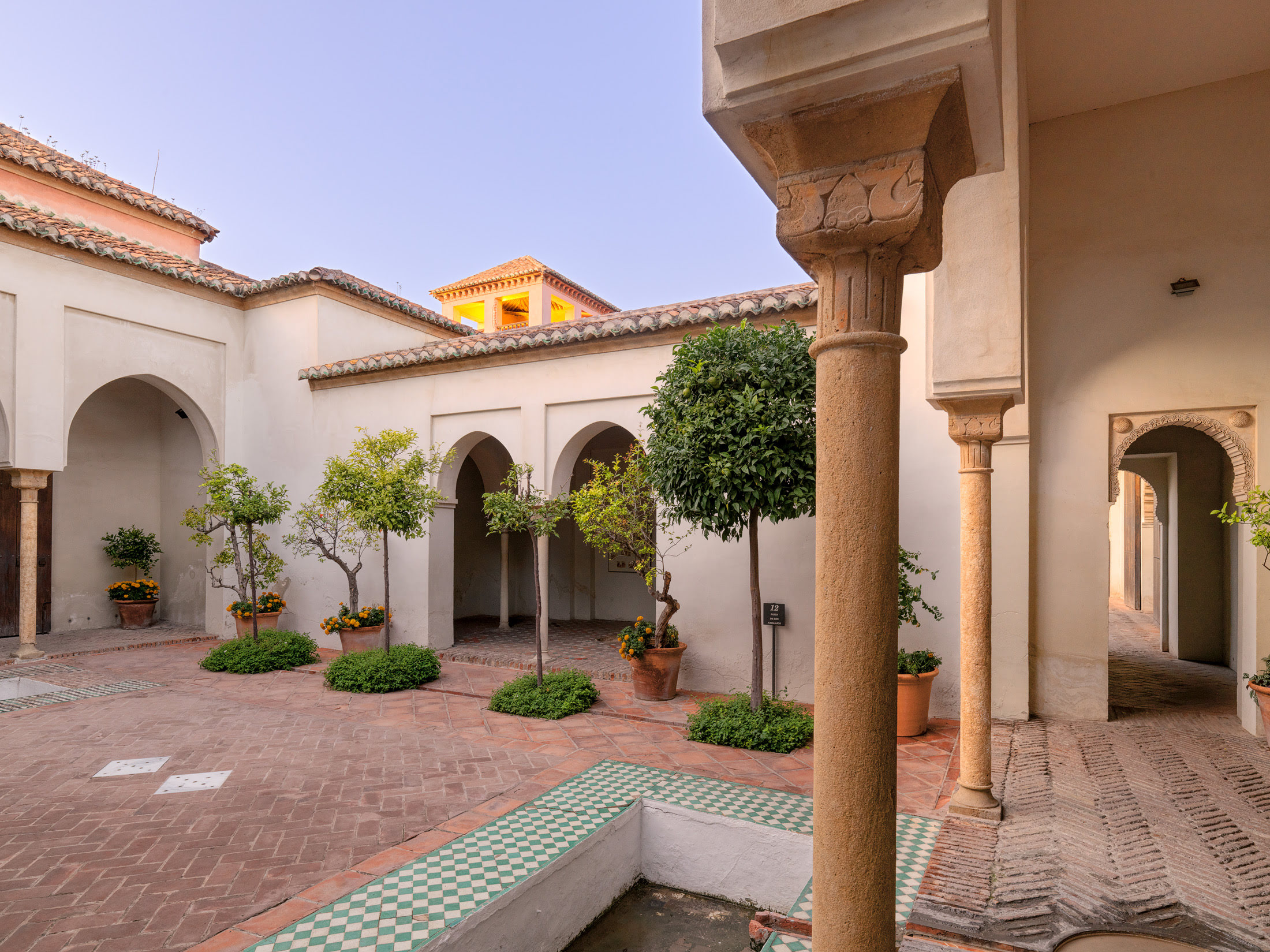This 11th century tower with a bent entrance is called Puerta de la Bóveda Vaída (Gate of the Sail Vault), named after the beautiful brick vault that covers it. It is one of the most interesting defensive systems found in the fortification. The architect and great specialist Leopoldo Torres Balbás believed that this defensive system had already been described in the Hellenistic treatises, and could have been imported from the Byzantine Empire. The configuration of the passage forces a sharp turn, which means that as you enter you cannot see the exit.
The passage through the gate is made of a succession of arches. The first, which was renovated in the 16th century, is a semi-circular arch made out of brick; the second, which is a structural arch that defines the space of the vault, is a horseshoe arch from the 11th century; the third, on the other side of the square, is also a horseshoe arch from the 11th century, and rests on shafts of reutilised stone. Next, there is another horseshoe arch with stone and brick voussoirs that are horizontal in the lower section, dating back to the 11th century, which opens to a vaulted space at the exit of the tower. It rests on large shafts of reutilised Roman columns. It is interesting to observe this succession of roofs.
The whole lower part of the tower is solid, with access originally being through the small door from the wall-walk towards the interior of the tower. In the bent passage you can see how in some cases the rock has been lowered and in others the gaps in the rock have been filled with rammed earth or masonry in order to provide a more regular finish to its interior. It uses shafts of columns reused from Roman buildings as a construction material. The upper part of the tower and the room found there were restored in the 1940s.








